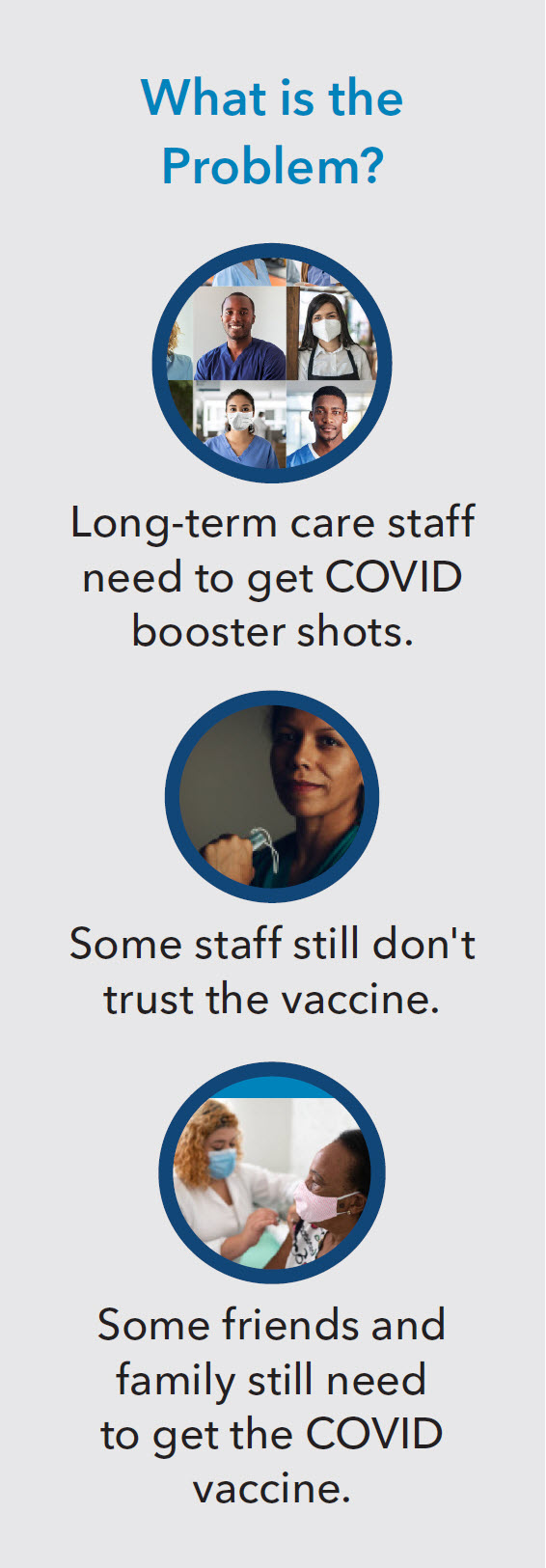- Our Research
- Research Areas
- Addictions
- Aging & Geriatrics
- Behavior Change
- Biostatistics
- Cancer
- Cardiovascular Health
- Child & Adolescent Health
- Chronic Illness Management
- Health Informatics
- Health Services & Economics
- Healthy Communities
- Medication Use & Patient Safety
- Mental Health
- Obesity
- Preventive Medicine
- Social Determinants of Health
- Vaccines & Infectious Diseases | COVID-19
- Our Scientists
- Collaborate with Us
- Our Publications
- Research Funding Sources
- Research Areas
- News and Events
- Get Involved
- About Us
- Live Healthy
Setting the Stage
The ENSPIRE Playbook
Setting the Stage | Mapping and Organizing Your Codesign | Conducting Your Codesign | Producing and Sharing Your Codesign Projects | Evaluating Your Codesign | Recommendations Based on Lessons Learned | About the ENSPIRE Study
 Discovering codesign — what does “codesign” mean?
Discovering codesign — what does “codesign” mean?
![]()
Codesign compared to traditional design
- How does codesign differ from traditional design approaches?
- Who is involved in a codesign project?
- Who leads the codesign process?
Pros and cons of codesign
- What are some pros of using codesign for your project?
-
What are cons of using codesign?
![]()
ENSPIRE found many benefits to codesign — and some challenges
The Inclusive Design Research Centre in Toronto defines collaborative design — or “codesign” for short — as a process of designing with, rather than designing for:
![]() Those who are most impacted by the design, especially those with needs least served by existing designs, are involved in the process from its earliest stages. They are engaged throughout the process, and directly contribute to the creation of designs that meet their unique needs. Participants are not involved as research subjects or consultants, rather as designers engaged in active and sustained collaboration.”¹
Those who are most impacted by the design, especially those with needs least served by existing designs, are involved in the process from its earliest stages. They are engaged throughout the process, and directly contribute to the creation of designs that meet their unique needs. Participants are not involved as research subjects or consultants, rather as designers engaged in active and sustained collaboration.”¹
Codesign is different from traditional design methods in key ways. The Western Victoria Primary Health Network, based in Gelong, Australia, provides this helpful summary:
![]() Codesign emphasises three problem-solving qualities — explorative, iterative and collaborative. It is differentiated from other problem-solving approaches by its focus on properly spending the time to fully understand the challenge before even attempting to develop the solution. It also makes a point of identifying and testing assumptions, drawing on real human behaviour and motivators, and testing and refining solutions until they are demonstrably fit-for-purpose in the eyes of those who will be affected by the design or change.”²
Codesign emphasises three problem-solving qualities — explorative, iterative and collaborative. It is differentiated from other problem-solving approaches by its focus on properly spending the time to fully understand the challenge before even attempting to develop the solution. It also makes a point of identifying and testing assumptions, drawing on real human behaviour and motivators, and testing and refining solutions until they are demonstrably fit-for-purpose in the eyes of those who will be affected by the design or change.”²
Our codesign had the following elements recommended by the Inclusive Design Research Centre:¹
- Engaging with people impacted by the issue of interest
- Designing with rather than for community members
- Recognizing codesigners as leaders in the design process
- Collaborating in a setting familiar to codesigners — in our case, meetings were online and codesigners could join from anywhere convenient to them
- Supporting engagement with the product created through codesign
Pros and cons of codesign
The ENSPIRE team found many benefits to doing our work via codesign:
- Long-term care center staff could create messages and choose images for a public health campaign that reflected values and beliefs shared by their peers.
- Codesigners enjoyed working as a team with a shared mission and getting to know others who had similar life experiences and values outside the context of their work.
- Codesigners felt their opinions and voices were valued and appreciated. This seemed particularly important during the stressful and exhausting COVID-19 pandemic.
- Codesign led to a sense of engagement and empowerment that could have an impact beyond the codesign experience — for example, if long-term care staff saw a positive impact of their codesign efforts in their workplace.
But there were also challenging factors:
- Codesign takes a lot of time and resources. The amount of effort can vary depending on your problem/challenge, how easy it is to find codesigners, and the availability of partner organization staff to support the full process.
- Funding is often needed to offer stipends to codesigners and compensate partner organizations for any staff time required to support codesign.
- An effective process depends on thorough planning of the codesign sessions to ensure activities will be engaging and facilitators are well prepared.
- As with any community and public health project, codesign calls for flexibility, adaptability, and a good sense of humor.
- Although codesigners have knowledge of their peers and may share some values and beliefs, they may also differ from their peers in their opinions related to the issue under consideration in codesign (for example, opinions about the COVID-19 vaccine). It can be hard for codesigners who care deeply about an issue to consider how to persuade others who have a deeply held opposing viewpoint.
- Ensuring engagement requires carefully considering multiple pathways for people to feel comfortable sharing and providing input.
References
1 “Introduction to Community-Led Co-design,” Inclusive Design Research Centre, co-design.inclusivedesign.ca/introduction/, accessed September 10, 2024.
2 “A Guide to Co-design,” Western Victoria Primary Health Network, westvicphn.com.au/wp-content/uploads/2021/01/WVPHN_CodesignGuide_Digital-1-5.pdf, accessed September
10, 2024.
 Define your problem/challenge/question
Define your problem/challenge/question
![]()
- What problem or challenge is your community facing that needs codesign?
- Specifically, what are you wanting to come up with or create to help the community address that problem? Are you trying to create a better program, or education tool, or recruitment message, or something else?
- What makes codesign a good fit for the problem you are addressing?
- Who are possible partners that should be at the table when determining a solution to this problem? Are there, for example, community leaders or policymakers to include?
Why use codesign in ENSPIRE, a vaccine-promotion research project?
Our problems to address: 
- When we created our codesign project, staff at long-term care centers had the lowest COVID-19 vaccination rates of frontline health care workers in the United States, at around 50% in April 2021.¹
- To motivate staff to get the vaccine, long-term care centers were using strategies similar to those used with flu vaccination annually. They also were using a few novel approaches, including vaccine mandates, required masking for staff who were unvaccinated, and financial incentives. Although these strategies may increase vaccination rates, they do not necessarily improve how confident people feel about the safety and efficacy of vaccines.
- Many center staff were not confident or trusting about the COVID-19 vaccine. Community-engagement strategies are important for improving vaccine confidence, especially for immigrant/refugee groups and communities of color that experience racism and discrimination in both research and health care.²
- Mistrust of governmental and medical systems extends to vaccines and messaging about them.
 Why codesign was a good fit for ENSPIRE:
Why codesign was a good fit for ENSPIRE:
- Through codesign, ENSPIRE was able to foster collaboration with our community of interest: staff at long-term care centers.
- Our codesign teams created and distributed materials promoting the COVID-19 booster vaccine to other long-term care center employees.
- All our codesigners worked in teams with a shared racial/ethnic identity. We believed the messages created by these teams would be more relatable and compelling for long-term care center staff.³
References
1 “KFF COVID-19 Vaccine Monitor,” Kaiser Family Foundation, kff.org/coronaviruscovid-19/dashboard/kff-covid-19-vaccine-monitor-dashboard/, accessed September 10, 2024.
2 Strategies for building confidence in the COVID-19 vaccines, National Academies of Sciences, Engineering, Medicine, The National Academies Press, 2021.
3 Robb Butler et al. “Diagnosing the Determinants of Vaccine Hesitancy in Specific Subgroups: The Guide to Tailoring Immunization Programmes (TIP),” Vaccine, August 14, 2015.
Kaiser Permanente Washington Health Research Institute for:
Kaiser Permanente Washington Health Research Institute
Phone: 206-287-2900Fax: 206-287-2871
Contact us
Sign up for our newsletter
Policy on Conflict of Interest
Nondiscrimination Notice and Language Access Services
Land Acknowledgment
Our Seattle offices sit on the occupied land of the Duwamish and by the shared waters of the Coast Salish people, who have been here thousands of years and remain. Learn about practicing land acknowledgment.


